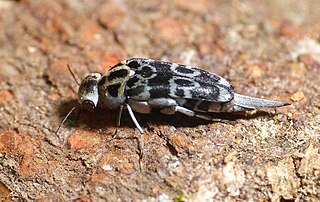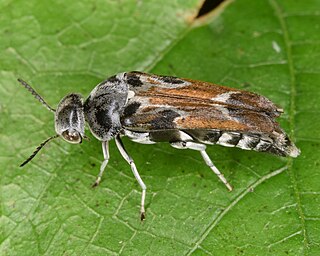
Genus is a taxonomic rank above species and below family as used in the biological classification of living and fossil organisms as well as viruses. In binomial nomenclature, the genus name forms the first part of the binomial species name for each species within the genus.

Herring are forage fish, mostly belonging to the family of Clupeidae.

Marine conservation, also known as ocean conservation, is the protection and preservation of ecosystems in oceans and seas through planned management in order to prevent the over-exploitation of these marine resources. Marine conservation is informed by the study of marine plants and animal resources and ecosystem functions and is driven by response to the manifested negative effects seen in the environment such as species loss, habitat degradation and changes in ecosystem functions and focuses on limiting human-caused damage to marine ecosystems, restoring damaged marine ecosystems, and preserving vulnerable species and ecosystems of the marine life. Marine conservation is a relatively new discipline which has developed as a response to biological issues such as extinction and marine habitats change.

In biology, taxonomic rank is the relative level of a group of organisms in an ancestral or hereditary hierarchy. A common system of biological classification (taxonomy) consists of species, genus, family, order, class, phylum, kingdom, and domain. While older approaches to taxonomic classification were phenomenological, forming groups on the basis of similarities in appearance, organic structure and behaviour, methods based on genetic analysis have opened the road to cladistics.

Glipa is a genus of beetles in the family Mordellidae, containing the following species:
Glipa gracillima is a species of beetle in the genus Glipa. It was described in 2000.
Glipa watanabei is a species of beetle in the genus Glipa. It was described in 2000.
Glipa watanabeorum is a species of beetle in the genus Glipa. It was described in 2002.
Glipa afrirozui is a species of beetle in the genus Glipa. It was described in 1949.
Glipa rufomaculata is a species of beetle in the genus Glipa. It was described in 1923.
Glipa siamemsis is a species of beetle in the genus Glipa. It was described in 1923.
Glipa batjanensis is a species of beetle in the genus Glipa. It was described in 1917.
Glipa quiquefasciata is a species of beetle in the genus Glipa. It was described in 1933.
Glipa fukiensis is a species of beetle in the genus Glipa. It was described in 1940.
Glipa pici is a species of beetle in the genus Glipa. It was described in 1940.
Glipa iridescens is a species of beetle in the genus Glipa. It was described in 1952.

Glipa hilaris is a species of beetle in the genus Glipa. It was described in 1835.
Glipa luteofasciata is a species of beetle in the genus Glipa. It was described in 1930.
Glipa subsinuatipennis is a species of beetle in the genus Glipa. It was described in 1936.

The Interim Register of Marine and Nonmarine Genera (IRMNG) is a taxonomic database which attempts to cover published genus names for all domains of life, from 1758 in zoology up to the present, arranged in a single, internally consistent taxonomic hierarchy, for the benefit of Biodiversity Informatics initiatives plus general users of biodiversity (taxonomic) information. In addition to containing just over 500,000 published genus name instances as at May 2023, the database holds over 1.7 million species names, although this component of the data is not maintained in as current or complete state as the genus-level holdings. IRMNG can be queried online for access to the latest version of the dataset and is also made available as periodic snapshots or data dumps for import/upload into other systems as desired. The database was commenced in 2006 at the then CSIRO Division of Marine and Atmospheric Research in Australia and, since 2016, has been hosted at the Flanders Marine Institute (VLIZ) in Belgium.






